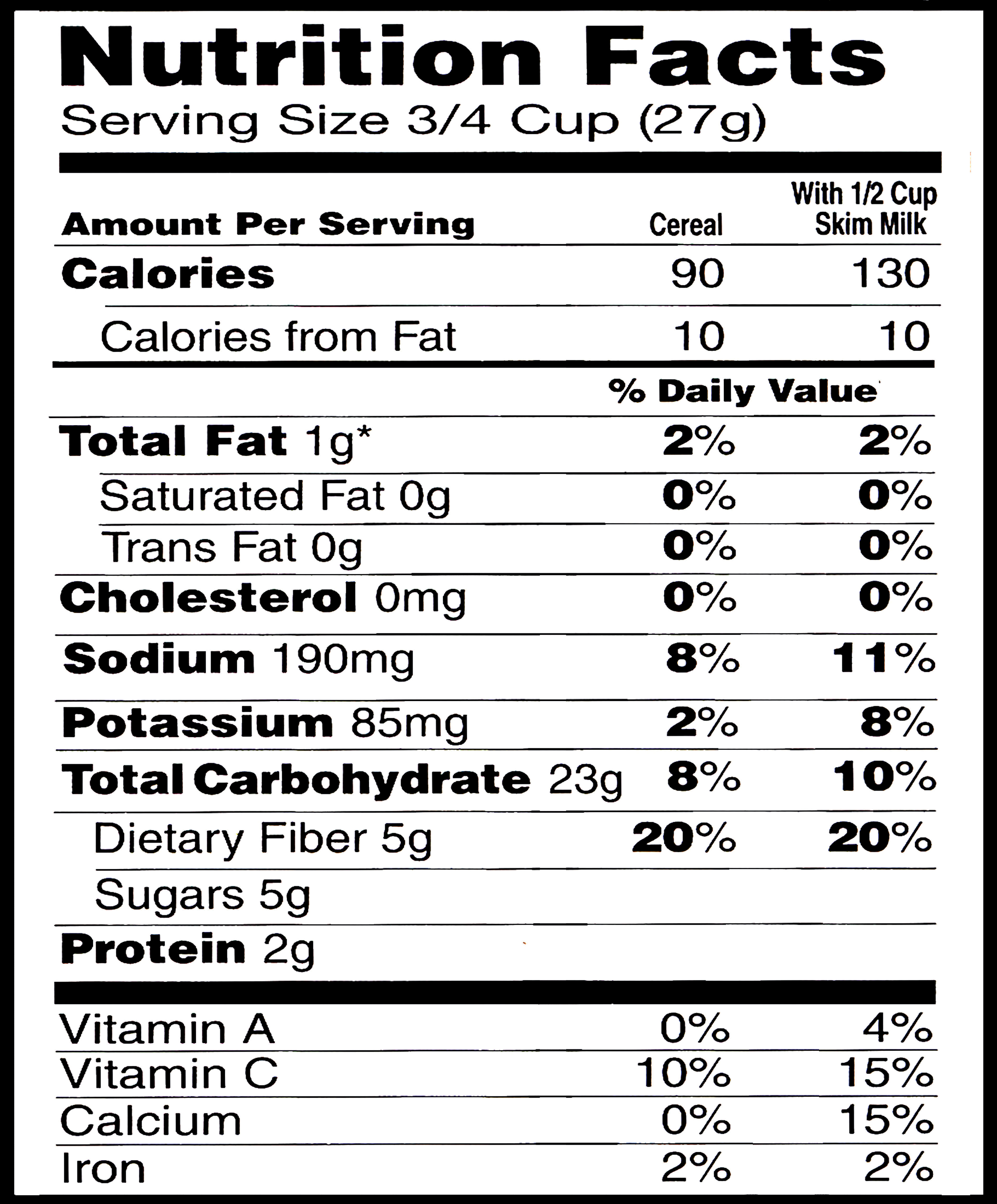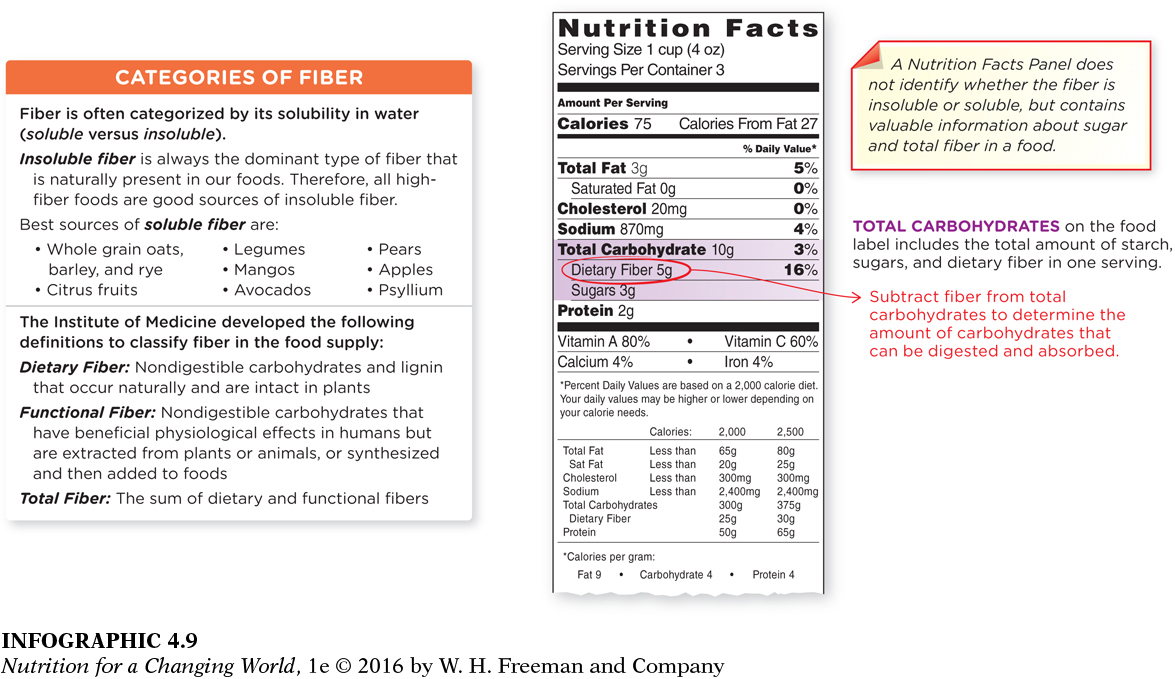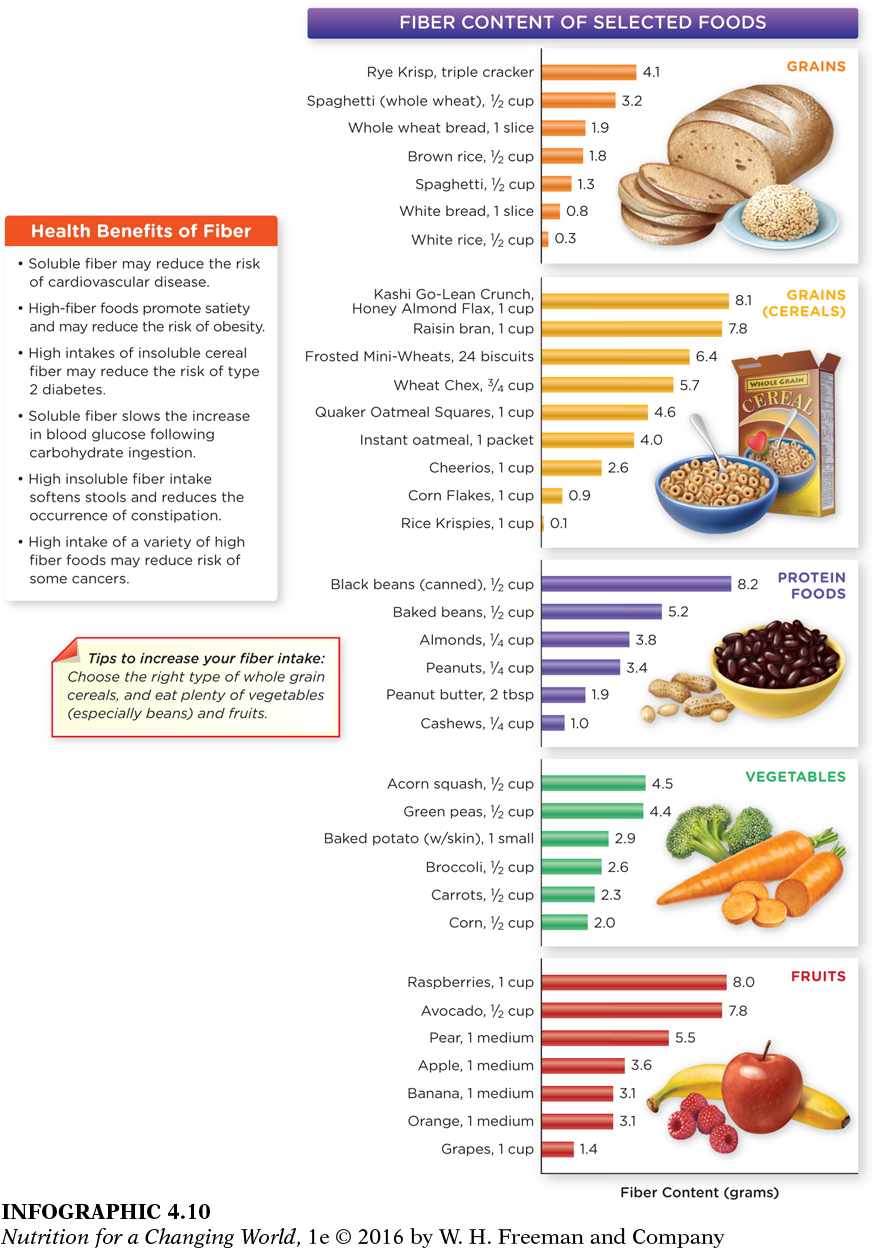UNDERSTANDING FIBER
The best measure to identify healthful whole grain foods, Mozaffarian found, was a total carbohydrates to fiber ratio of 10:1 (or less). This is approximately the ratio of total carbohydrate to fiber in whole wheat flour. Foods with a ratio higher than this are likely to contain added sugars and refined grains.
For example, a product with 40 grams of carbohydrates and 5 grams of fiber would have a ratio of 8:1, which is less than 10:1. This is a favorable ratio. This measure tends to identify foods that have significant whole grains, low sodium, low trans fats, and low added sugar—
Fiber recommendations
In addition to reflecting the presence of whole grains versus refined grains, fiber is important in its own right. In fact, many of the benefits of eating whole grain foods likely come from the fiber within them. The Institute of Medicine, the health arm of the U.S. National Academy of Sciences, recommends that men younger than 50 years should consume 38 grams of fiber per day; women younger than 50 years should consume 25 grams of fiber a day. Only about 5% of Americans meet these goals consuming an average of 17 grams of fiber a day.

Fiber includes cellulose and other nonstarch polysaccharides and oligosaccharides that cannot be broken down by human digestive enzymes. Fiber is typically found in and around plant cell walls. It is most abundant in legumes; nuts and seeds; berries; many vegetables; fruit coverings, such as apple peels; and the bran surrounding grains like wheat, oats, rice, and rye.
Types of fiber
SOLUBLE FIBER a type of fiber that dissolves in water and often forms a viscous gel that acts to slow digestion and lower blood cholesterol and the risk of heart disease; they are also often readily fermented by bacteria in the colon
INSOLUBLE FIBER a type of fiber that does not dissolve in water, increases transit time through the GI tract, and contributes “bulk” to stool, fostering regular bowel movements
There are several ways to categorize fiber. One way is by the solubility of the fiber in water. Soluble fiber dissolves in water, often forming viscous gels and it is typically readily fermented (broken down) by bacteria in the colon. In contrast, insoluble fiber does not dissolve in water and is typically poorly fermented. It passes through the gastrointestinal tract relatively intact.
DIETARY FIBER naturally occurring carbohydrates and lignin from plants that either cannot be digested in the intestinal tract or for which digestion is delayed
FUNCTIONAL FIBER nondigestible carbohydrates isolated from plants and animals and added to foods, which have a beneficial effect on health, such as psyllium and pectin
The source of fiber is another way that fiber is classified. Dietary fiber is undigestible carbohydrates that are present naturally in intact plant foods. Functional fiber is nondigestible carbohydrates that have been added to a food product and have health benefits that are similar to those of dietary fiber. When you add up a food’s dietary fiber and its functional fiber, you get its total fiber. (INFOGRAPHIC 4.9)

Question 4.9
 What type of soluble fiber have you consumed most recently?
What type of soluble fiber have you consumed most recently?
Look at the best sources of soluble fiber information in Infographic 4.9 and calculate how much of these foods you have consumed.
Benefits of fiber
Fiber (particularly insoluble fiber) is healthful in part because it softens stools and thereby helps maintain regular bowel movements and reduces the risk of hemorrhoids and diverticular disease. Insoluble fiber has also been shown to decrease the risk of diabetes.
A higher intake of soluble fiber has been shown to reduce the risk of coronary heart disease. Diets high in soluble fiber also slow the emptying of food from the stomach into the small intestine, which may extend the sensation of fullness following a meal. Many soluble fibers also slow digestion and absorption, and reduce the rise in blood glucose following a carbohydrate-

Question 4.10
 What two or three high-
What two or three high-
Keep track of the foods you eat on an average day, and then look at Infographic 4.10 to find high-